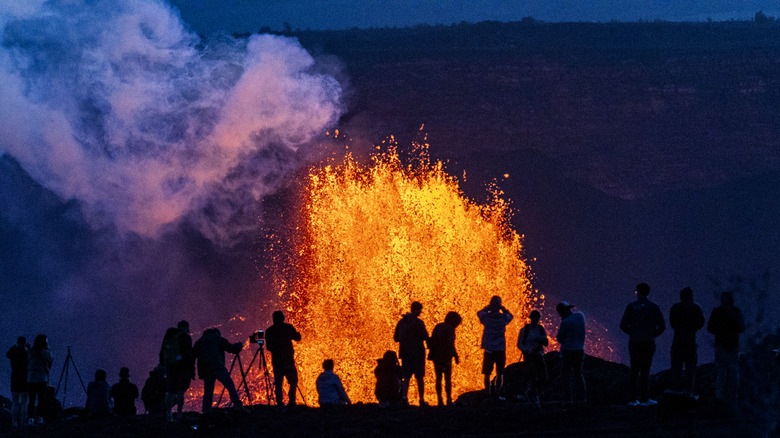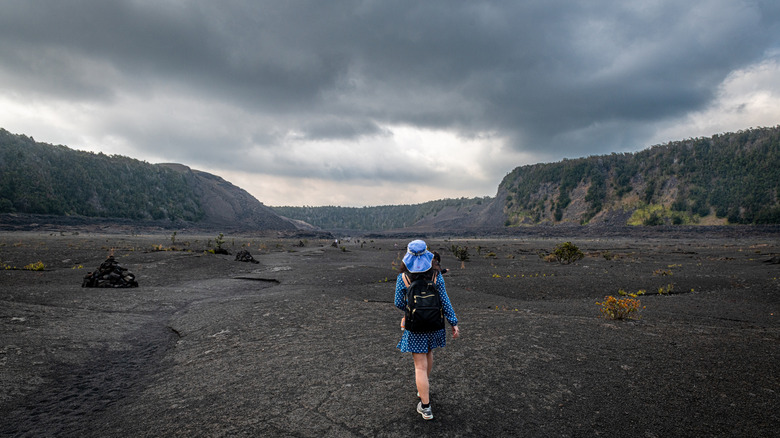What Tourists Should Know About Visiting Hawaii's National Park With An Active Volcano
Hawaii Volcanoes National Park on the Big Island offers a rare glimpse into the raw, ongoing power of Mother Earth. Home to Kīlauea, one of the world's most active volcanoes, the park spans more than 300,000 acres of volcanic landscapes, lush rainforests, and stark lava fields. Visitors can witness how molten rock shapes the land, from newly formed black sand beaches to hardened lava flows that stretch for miles. The park's ever-changing terrain provides both adventure and education, as rangers and interpretive signs share insights into volcanic activity, native flora and fauna, and the cultural significance of these sacred lands.
Kīlauea's activity has intensified in recent years, drawing visitors eager to see lava fountains and steaming craters with their own two eyes. While spectacular, these displays can be unpredictable. Park officials emphasize safety, and want tourists to know certain areas may close temporarily due to lava flows, volcanic gas, or unstable ground. Guided hikes and observation points offer secure ways to watch Kīlauea's majesty without risking exposure. Early morning or late afternoon visits often provide the most dramatic lighting for photography, when the sun casts long shadows over jagged lava landscapes.
Understanding the volcano's impact enhances the experience. For centuries, Kīlauea has shaped not only the region's physical environment but also Hawaiian culture. Local myths speak of Pele, the goddess of fire, whose presence is said to inhabit the volcano. Make sure to approach the park with respect (and never take a rock back home), acknowledging both its raw natural power and spiritual significance. A visit here is more than sightseeing; it's a journey into the elemental forces that formed Hawaii.
Timing, trails, and tours in Kīlauea
A well-planned trip to Hawaii Volcanoes National Park maximizes both safety and fun. The park is open year-round, but conditions vary seasonally. The main entrance near Volcano Village provides easy access to visitor centers, parking, and key trails. Admission is $30 per vehicle and is valid for seven days, giving you the flexibility to explore at a relaxed pace.
Hiking is one of the best outdoor activities to enjoy in Hawaii, with opportunities around here ranging from short walks to multi-hour treks. Popular trails include the Sulphur Banks Trail, where you can see steam vents and colorful mineral deposits, and the Kīlauea Iki Trail, which descends into a cooled lava crater. If you're looking for a guided experience, several tour companies offer small-group hikes or helicopter flights over active lava flows, offering a bird's-eye view of the dramatic volcanic landscape.
Safety is paramount. Remember, you're dealing with an active volcano here. Volcanic gases, particularly sulfur dioxide, can be hazardous to those with respiratory conditions. Make sure to check real-time updates from the National Park Service and follow all posted warnings. Good walking shoes, water, sun protection, and layers for variable weather can make the park more comfortable. By preparing ahead, you can safely enjoy the dramatic contrasts of molten lava, verdant forests, and rugged coastlines that define this extraordinary destination.
Local flavors and hidden gems beyond Kīlauea volcano
The park is only one highlight of the surrounding Big Island. Volcano Village, a short drive from the main entrance, offers charming cafes, art galleries, and local boutiques. Sampling freshly roasted Kona coffee (some of the best you'll ever taste!) or locally grown tropical fruits adds a sensory layer to the adventure, while evening stargazing atop Mauna Loa provides an otherworldly perspective on Hawaii's skies.
Exploring nearby sites expands the experience. The Thurston Lava Tube, an underrated activity you shouldn't skip while in Hawaii, allows you to walk through a natural underground tunnel formed by past lava flows, while the Chain of Craters Road winds down to dramatic sea cliffs and black sand beaches. Each stop tells a story of volcanic creation and ongoing transformation, from smoldering craters to vibrant rainforest pockets that thrive on nutrient-rich volcanic soil.
You'll leave Hawaii Volcanoes National Park with more than photographs — you'll carry memories of witnessing Earth's power in motion. The park offers a balance of thrill, education, and reflection, making it a must-see for nature lovers, adventure seekers, and anyone curious about the dynamic processes shaping our planet. By embracing both the awe-inspiring landscapes and the safety guidelines, travelers can experience Kīlauea's fiery heart responsibly, returning home with a story of volcanic wonder that few places on Earth can match.


